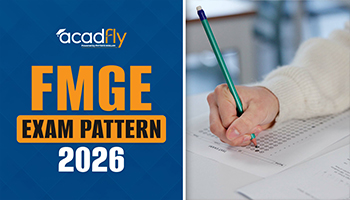

Transitioning from CPT (Curricular Practical Training) to OPT (Optional Practical Training) is a crucial step for international students on F-1 visas seeking to extend their work opportunities in the U.S. This process involves several key considerations and steps that must be carefully managed to ensure a smooth transition. In this comprehensive guide, we will explore the various aspects of switching from CPT to OPT, the CPT to OPT process, OPT application after CPT, and F-1 visa considerations.
Understanding CPT and OPT
Curricular Practical Training (CPT) and Optional Practical Training (OPT) are two programs that allow F-1 visa students to gain practical work experience in the U.S. CPT is integrated into the curriculum and must be related to your field of study, while OPT offers broader work opportunities before or after graduation. Both require authorization from your Designated School Official (DSO) and approval from the U.S. Citizenship and Immigration Services (USCIS).
What is CPT?
Curricular Practical Training (CPT) allows F-1 students to gain practical experience related to their field of study while they are still enrolled in their academic program. CPT can be either part-time or full-time and must be integral to the student's curriculum. It is typically used for internships, co-op programs, or practicum experiences that are required for the completion of a degree.
What is OPT?
Optional Practical Training (OPT) is a form of work authorization that allows F-1 students to work in their field of study for up to 12 months (or 36 months for STEM graduates) after completing their degree program. OPT is not tied to specific course requirements but must be directly related to the student's major.
The Transition from CPT to OPT
Transitioning from Curricular Practical Training (CPT) to Optional Practical Training (OPT) involves shifting from work authorized as part of your academic program (CPT) to work related to your field of study after graduation (OPT). To make this transition, ensure that your OPT application is filed timely with the USCIS, and coordinate with your Designated School Official (DSO) to update your I-20 form and ensure compliance with all visa regulations.
The Importance of a Smooth Transition
The transition from CPT to OPT is significant because it marks a shift from practical training required as part of the academic program to post-graduation work authorization. Ensuring a smooth transition is essential to avoid any gaps in employment authorization and to make the most of the OPT period.
Steps for Transitioning to OPT
To transition to Optional Practical Training (OPT), first, ensure you are in good academic standing and have completed your coursework or are close to completion. Next, apply for OPT through your Designated School Official (DSO), who will update your I-20 form to reflect your OPT request. Finally, submit your OPT application to the U.S. Citizenship and Immigration Services (USCIS) and wait for approval before starting any employment.
1. Verify Your Eligibility for OPT
Before initiating the OPT process, confirm that you meet the eligibility requirements. To apply for OPT, you must have maintained valid F-1 status and have completed at least one full academic year of study.
2. Assess Your Current CPT Status
Evaluate your current CPT participation to understand how it affects your OPT eligibility. Note that while CPT does not directly impact OPT eligibility, ensuring that CPT is properly documented and reported is important for maintaining valid F-1 status.
3. Prepare Your OPT Application
The OPT application process involves several steps. You need to prepare and submit Form I-765, Application for Employment Authorization, along with supporting documents such as Form I-20 (Certificate of Eligibility for Nonimmigrant Student Status), passport photos, and proof of prior CPT.
4. Submit Your Application to USCIS
Once you have completed your OPT application, submit it to the United States Citizenship and Immigration Services (USCIS). The processing time can vary, so it’s essential to apply as early as possible, ideally 90 days before your program end date.
5. Track Your Application Status
Monitor the status of your OPT application through the USCIS website using your receipt number. This will help you stay informed about any updates or requests for additional information.
CPT to OPT Process
The CPT (Curricular Practical Training) to OPT (Optional Practical Training) process involves transitioning from a student work authorization under CPT to post-graduation work authorization under OPT. To ensure a smooth transition, students must apply for OPT before completing their studies, maintain valid F-1 status, and coordinate with their Designated School Official (DSO) for accurate documentation and timing.
Detailed Overview of the CPT to OPT Process
Transitioning from CPT to OPT requires careful planning and adherence to regulations. Here is a detailed overview of the process:
1. Completing Your CPT
Ensure that your CPT is completed according to your institution's guidelines. Your CPT should end before your OPT start date. It’s crucial to ensure that all required documentation related to your CPT is up to date and correctly filed.
2. Applying for OPT
You can apply for OPT up to 90 days before your program end date or within 60 days after completing your program. This window allows you to align the start of your OPT with the end of your CPT and avoid any gaps in your work authorization.
3. Receiving Your EAD Card
After your OPT application is approved, you will receive an Employment Authorization Document (EAD) card. This card is necessary to legally work in the U.S. under OPT. Make sure to keep it safe and present it to employers when required.
Key Considerations During the Transition
During the transition, ensure you stay informed about any changes in visa regulations or university policies that might affect your status. Keep communication open with your Designated School Official (DSO) and maintain accurate records of your academic and financial status to avoid any disruptions. Additionally, be mindful of deadlines for submitting required documents to avoid delays in your visa renewal process.
Employment Gap
One critical consideration is avoiding an employment gap between CPT and OPT. Ensure that your OPT application is processed in time to prevent any period where you are not authorized to work. Planning and applying early can help mitigate this risk.
Maintaining F-1 Status
Throughout the transition, it's important to maintain your F-1 status. This means continuing to comply with all F-1 visa regulations, including reporting your employment and any changes in your address to your Designated School Official (DSO).
OPT Application After CPT
After completing Curricular Practical Training (CPT), you can apply for Optional Practical Training (OPT) as long as you meet the eligibility criteria. Ensure that you apply for OPT before your program end date and that you have maintained your F-1 status throughout your CPT. It's important to coordinate with your Designated School Official (DSO) to ensure a smooth transition from CPT to OPT.
How to Apply for OPT
To apply for Optional Practical Training (OPT), you must first obtain a recommendation from your Designated School Official (DSO) and then submit Form I-765, Application for Employment Authorization, to USCIS. Ensure you apply within the specified timeframe, typically 90 days before and up to 60 days after your program end date.
1. Form I-765
Complete Form I-765 with accurate information. This form is essential for USCIS to process your OPT application. Ensure all sections are filled out correctly and review the instructions thoroughly.
2. Supporting Documents
Gather the required supporting documents, including
-
Form I-20 with OPT recommendation from your DSO
-
Copy of your passport
-
Passport-style photos
-
Form I-94 (Arrival/Departure Record)
-
Previous EAD card if applicable
3. Filing Your Application
Mail your completed application package to the appropriate USCIS service center. Keep copies of all documents and proof of mailing.
4. Receiving Your OPT Approval
Once approved, you will receive an EAD card. Ensure that you start working only after receiving this card and verify that the start date on the EAD aligns with your OPT period.
F-1 Visa After CPT
After completing Curricular Practical Training (CPT), you can continue to stay in the U.S. on an F-1 visa as long as you remain enrolled in your academic program and comply with all visa regulations. If you want to work full-time after graduation, you may need to apply for Optional Practical Training (OPT) or another appropriate work authorization.
Understanding F-1 Visa Requirements
The F-1 visa is a non-immigrant student visa that requires maintaining a valid status throughout your studies and practical training. Transitioning from CPT to OPT does not change your visa status but does require that you remain compliant with visa regulations.
Key Compliance Areas
-
Reporting Changes: Notify your DSO of any changes in your employment or address.
-
Maintaining Enrollment: Ensure that you complete your program requirements and transition to OPT before the end of your academic program.
Frequently Asked Questions
1. When should I apply for OPT if I am currently on CPT?
2. Can I start my OPT job before receiving my EAD card?
3. How long does it take to process an OPT application?
4. What happens if my OPT application is denied?
5. Can I travel outside the U.S. while my OPT application is pending?









